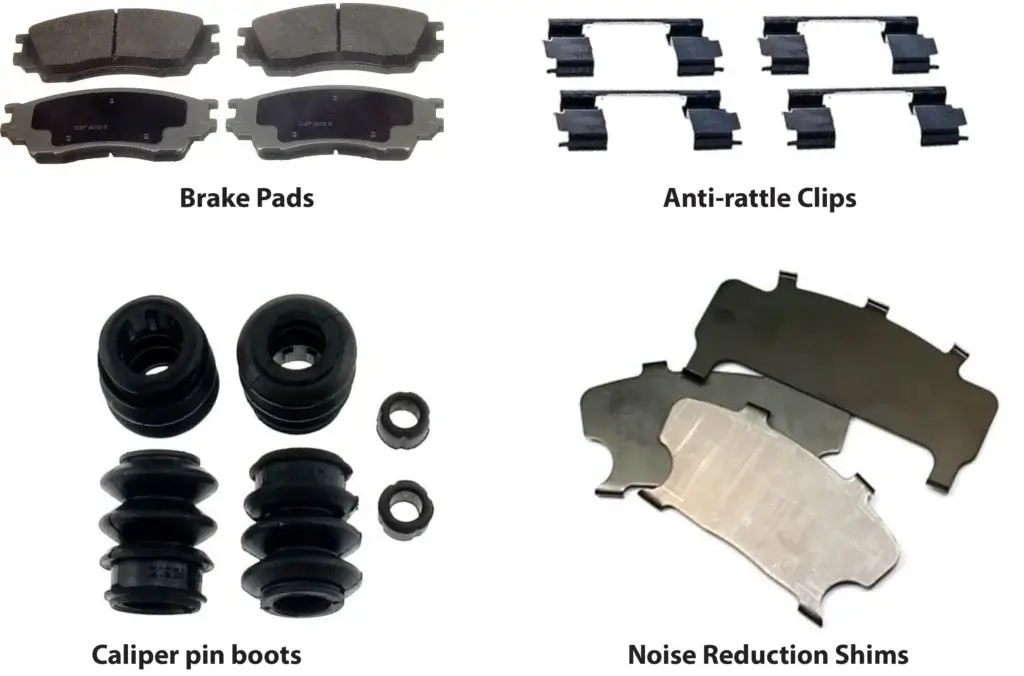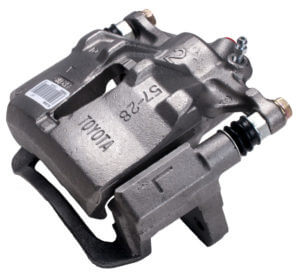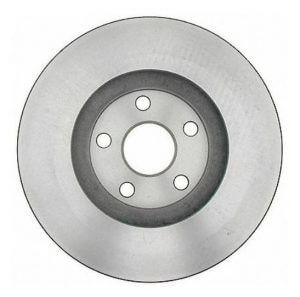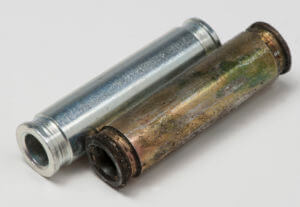Brake Service: What’s included in a brake job?
What you should get when you pay for a brake service
Because your brakes play such a vital role in safety, some shops use fear to exploit their customers and sell unneeded brake parts and services. I’ve written this article to cover precisely what you should get when you pay for brake service.
Which brake parts wear out
Just like tires, brakes are wear items. Some parts can be reused or machined, but other parts must be replaced. Let’s discuss what can be reused or machined and which parts must be replaced.
Brake pads must be replaced
The friction material on brake pads wears with use. It is bonded to the steel backing plate and can’t be refurbished. In addition, the steel backing plate can rust over time. When the brake pads wear, they must be replaced as a set; an inboard and outboard pad for each wheel (4-pads per set).
Anti-rattle clips must be replaced
The anti-rattle clips perform double duty by reducing vibration and also preventing the pad end from rusting to the abutment area of the caliper bracket. The clips are made from stainless steel. However, they lose their spring tension due to the many heat cycles.
Caliper pin boots must be replaced
The caliper pin boots prevent water and grit from entering the slide pin bores. Old boots age from heat cycles and fail to keep water out. Some shops don’t replace the boots with every brake job. But that’s the sign of a poor brake job. The boots are cheap (less than $9/set) and easy to install.
Noise reduction shims must be replaced
The shims are multi-layered devices that dampen vibrations to reduce brake noise. They should never be reused

All of these parts should be replaced with new on every brake job. Never reuse old clips, shims or boots.
The Brake Rotors may be machined, but are most often replaced
A complete brake job includes measuring the old brake rotors to determine whether they can be resurfaced, cleaned, and reused. However, carmakers have reduced the thickness of the brake rotors on many late-model vehicles to save weight, so there’s often not enough thickness left to be machined and still be road-worthy after machining, so many shops replace them with new rotors.
Even if the old rotors are thick enough, it’s often not cost-effective to machine them. On most vehicles, the technician must remove the caliper brake to remove the rotor. At that point, it takes just minutes to install new rotors, as opposed to the labor required to clean the rust out of the ventilation vanes and then machine the old ones before reinstalling.
Note: All carmakers now recommend on-vehicle machining rather than bench lathe machining. Setting up an on-car brake lathe is more time consuming than machining rotors on a bench lathe
The folly of re-using old brake rotors
It’s not uncommon for DIYers to install new brake pads on old rotors. There are many reasons this is a bad idea:
• All rotors develop grooves, even if they’re not visible to the naked eye. Installing new pads on old rotors reduces braking power until the new pads wear into the grooves on the old rotors.
• Once the pads wear into the grooves on the old rotors, the brakes make noise, just like a stylus on an LP record.
• If the new brake pad friction material doesn’t match the friction material layer already on the old rotor, the new pads can become contaminated, resulting in brake noise.
Installing new pads on used rotors is the #1 cause of brake noise complaints and reduced braking effectiveness.
Brake calipers can be reused in most cases
In most cases, the brake caliper and caliper bracket can be cleaned and reused. There are only three reasons to replace a brake caliper
1) The dust boot is torn; water has leaked in, and the caliper piston has started to rust.
2) The square-cut O-ring seal is leaking brake fluid
3) The square-cut O-ring seals has hardened from age and heat and is no longer “rolling back” properly, causing the brake pads to stay engaged with the brake rotor.

Brake caliper slide pins can be cleaned, lubed and reused
A floating caliper moves along two steel pins with each brake application. The pins are coated with a high temperature grease and protected against water intrusion by rubber boots. Over time, the boots deteriorate and water enters the slide pins, causing them to corrode which eventually causes the caliper to seize and stop operating.
©, 2016 Rick Muscoplat
Posted on by Rick Muscoplat


